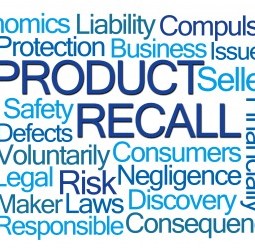What is Xarelto?
Xarelto is a prescription medication used to prevent blood clots from forming as the result of an irregular heartbeat/atrial fibrillation. Also called Rivaroxaban, the drug is commonly given after hip or knee replacement surgery. Patients with other types of blood clots including deep vein thrombosis (DVT) or pulmonary embolus (PE) may be given Xarelto along with those who need to prevent past blood clots from forming again. The drug is considered an anticoagulant and works by blocking specific clotting proteins in the patient’s blood.
Xarelto Side Effects
One of the most common side effects of the drug is unusual bleeding, including random nosebleeds or excessive bleeding from cuts. While this is normal in small doses, severe instances of excessive bleeding can signify a more dangerous reaction to Xarelto.
Patients who take Xarelto may also suffer one or more of the following side effects:
- Dizziness
- Headaches
- Muscle pain
- Vomiting
- Edema – an abnormal swelling of fluid in the tissues which can cause severe pain
Severe Xarelto Side Effects
The most severe side effect from taking Xarelto is uncontrolled bleeding. This is especially dangerous if the bleeding happens near a major organ, such as the kidneys, lungs, or brain. Loss or interruption of blood flow to these organs can cause them to lose some or all of their functionality. Uncontrolled bleeding can also result in pools of blood forming within the body which can lead to other severe health risks. Because Xarelto’s purpose is to prevent clotting, these bleeding events continue until the drug is flushed out of the system but will persist if the patient keeps taking the drug.
Complications from Xarelto
The most severe and deadly complications from taking Xarelto include:
- Hemorrhage
- Abnormal organ function
- Collection of clotted blood in an organ
- Permanent damage to heart, lungs, and other organs
- Internal bleeding
- Death
Xarelto Lawsuit
Lawsuits against Xarelto have been consolidated in federal court and number over 7,200 at the end September 2016. Patients have filed for damages caused by serious health complications after taking Xarelto and accuse the drug of posing a significant risk of uncontrollable bleeding episodes. This fact was allegedly omitted by manufacturers Bayer AG and Janssen Pharmaceuticals, that are a subdivision of Johnson & Johnson, and the public was not properly aware of it.
The first Xarelto bellwether trials are scheduled for early 2017. This leaves a limited amount of time for other plaintiffs to file suit should future cases be barred by the Statute Of Limitations.
Frequently Asked Questions
Frequently Asked Questions
In the United States, a tort refers to a, “body of rights, obligations, and remedies that is applied by courts in civil proceedings to provide relief for persons who have suffered harm from the wrongful acts of others.”
What is MDL?
An MDL stands for multidistrict litigation and is a special legal procedure conducted in federal court that is designed to quickly conduct the handling of complex cases, which can include dangerous drug and medical device lawsuits.
Product Defects
It means the manufacturer made an error either in the design or the fabrication of a product that causes it to not work as intended. This can be especially dangerous in many cases, such as those of faulty medical devices and prescription drugs.
Defective Design
A defective design in a product is one that is so great, the product cannot be utilized for the purposes intended or is even made hazardous as a result of the defect, imperfection, or design flaw. In the case of medical devices, this can be a deadly mistake.




